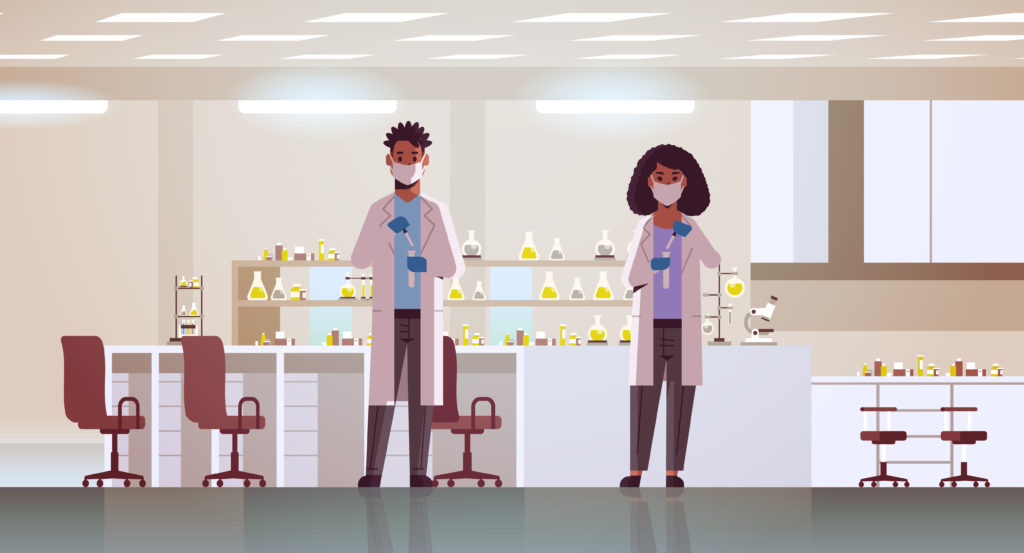In any laboratory environment, safety is imperative. From conducting basic research to handling hazardous chemicals, the associated risks require strict attention to safety protocols and procedures. And lab safety isn’t just about protecting yourself—it’s about ensuring the well-being of your colleagues or classmates, upholding the integrity of experiments, and protecting your environment. Here are some tips on how you can protect yourself and your surroundings in the lab.

Protect
Personal Protective Equipment (PPE) plays a pivotal role in preventing injuries and ensuring a safe working environment. From head to toe, here are a few PPE examples you should always be aware of when in the lab:
- Eye protection: Wear safety glasses, goggles, or face shields to protect your eyes from chemical splashes, flying debris, harmful radiation, and other hazards.
- Lab coats and aprons: Wear cotton, flame-resistant lab coats, or disposable aprons to protect your clothing and skin from spills, splashes, and flames. Make sure they fit properly to avoid accidents caused by loose clothing.
- Gloves: Wear nitrile, latex, neoprene, or rubber gloves to protect your skin from exposure to hazardous chemicals, biological agents, or extreme temperatures. Always match your glove type to the materials you’re handling.
- Footwear: Wear closed-toe, non-slip shoes to protect your feet from chemical spills, sharp objects, and heavy equipment.
Practicing good personal and laboratory hygiene is another way to protect yourself and others. Wash your hands thoroughly after removing gloves, handling potentially hazardous materials, and before leaving the lab to prevent contamination and ensure safety. Dispose and segregate waste properly, according to safety protocols. This helps prevent contamination, environmental harm, and potential hazards to others in the lab.
Prevent and Prepare
Preventing accidents in the lab starts with preparation. By following safety protocols and staying informed, you can minimize risks and ensure a safe working environment. Here are some essential steps to help prevent accidents and stay prepared for emergencies in the lab:
- Always attend required safety training and be sure to review procedures and safety information thoroughly before beginning any experiment.
- Follow all written and verbal instructions very carefully, and don’t hesitate to ask for help.
- Stay alert and proceed cautiously at all times, immediately reporting any unsafe conditions to your supervisor.
- Familiarize yourself with the locations and proper use of safety equipment: Fire extinguishers, first aid kits, eyewash stations, safety showers, fire alarms, and emergency exits.
- Understand the correct emergency procedures to handle hazards or injuries.
Conclusion
When it comes to accidents and emergencies in the lab, you may have thought: What are the odds that this happens to me? Well, your odds are far less likely when you take the necessary precautions. Implementing these lab safety measures will not only prevent incidents, minimize risks, and create a safer, more efficient workspace, but also help build a strong culture of safety in your lab.
Riley Bell
Latest posts by Riley Bell (see all)
- Genetic Symphonies: Building Hox of Life - December 17, 2024
- Exploring the World Through the Promega and Eppendorf Family Exchange Program - November 19, 2024
- Lab Safety: The Catalyst for Every Great Experiment - September 26, 2024
